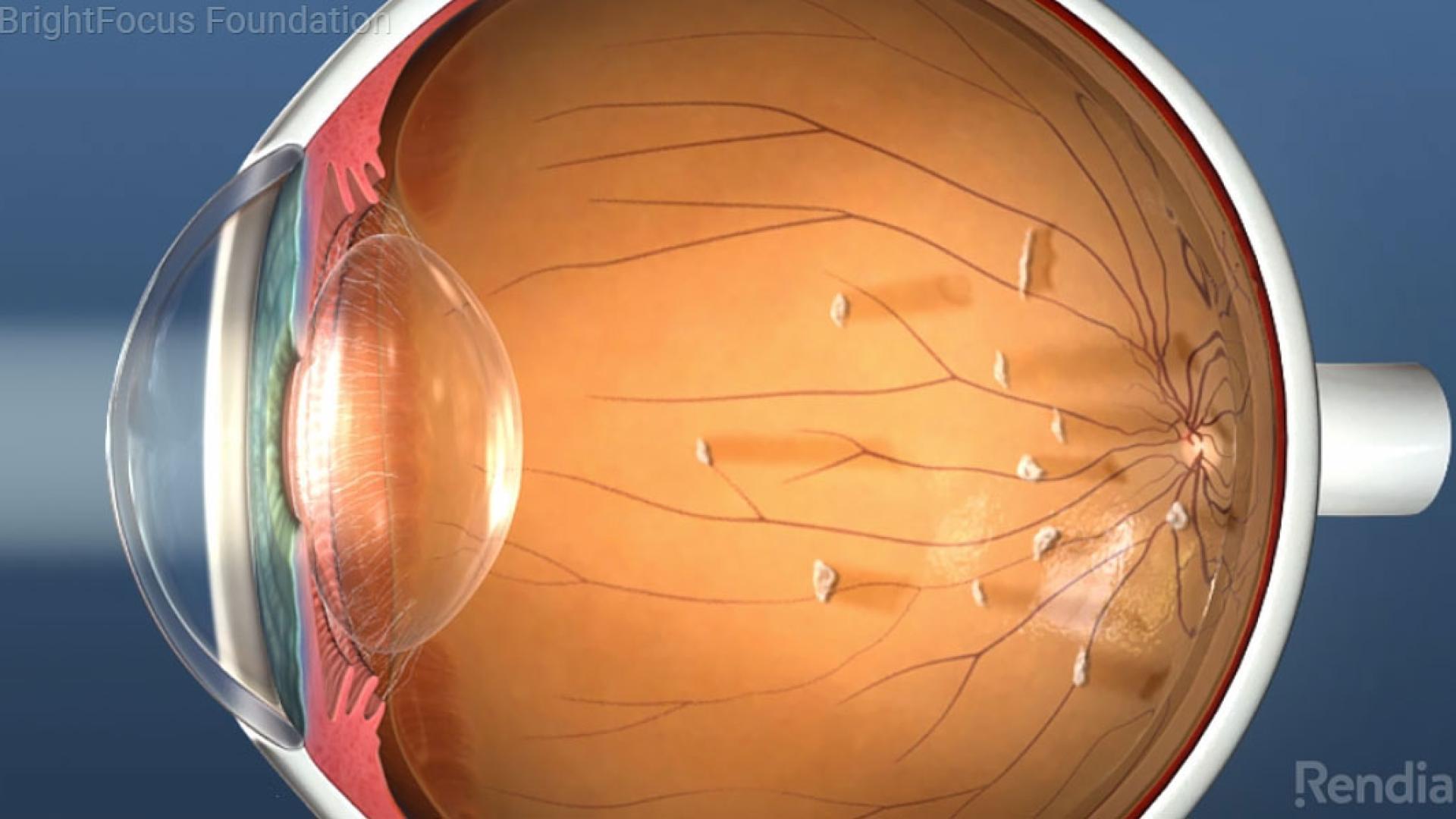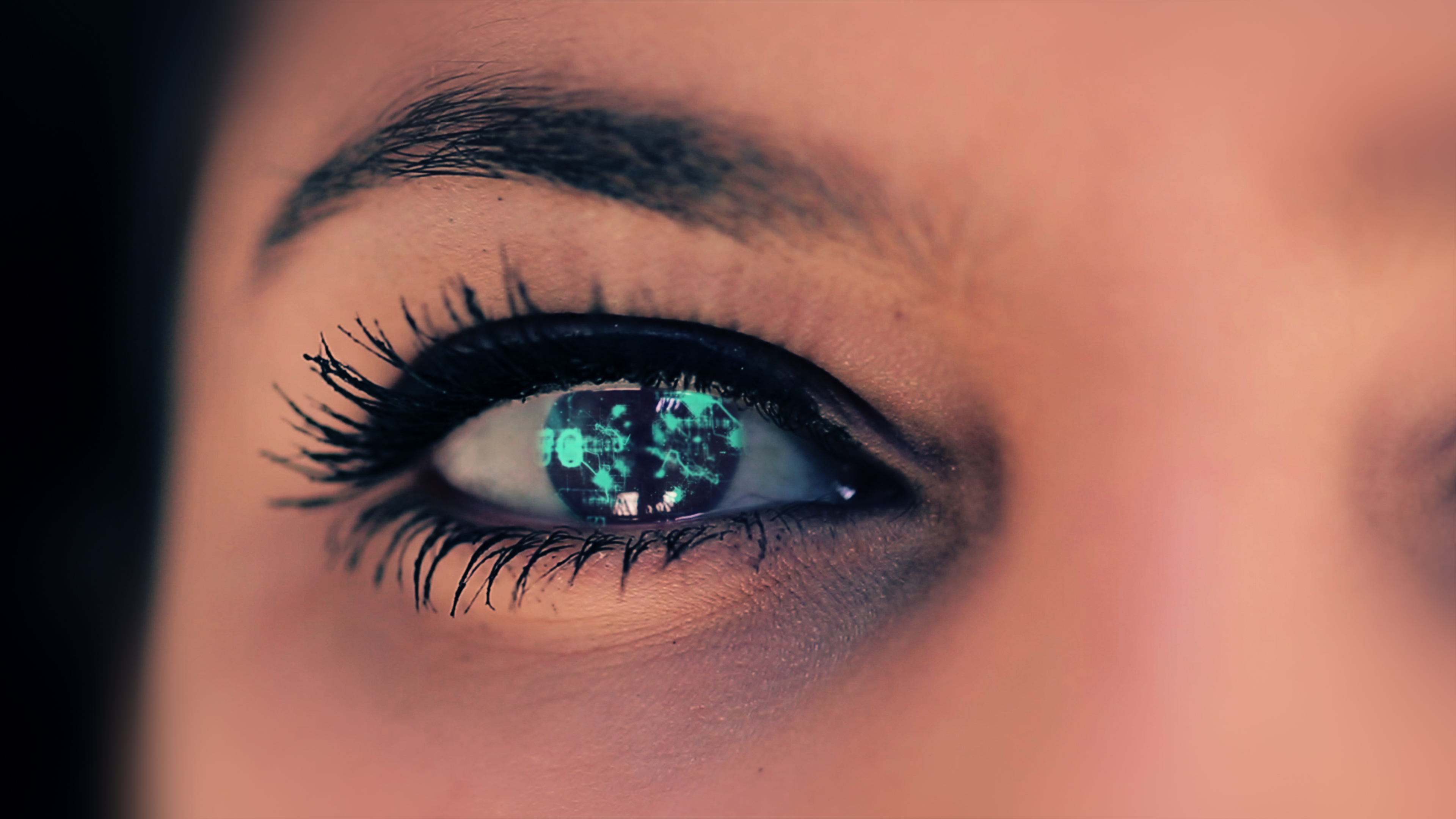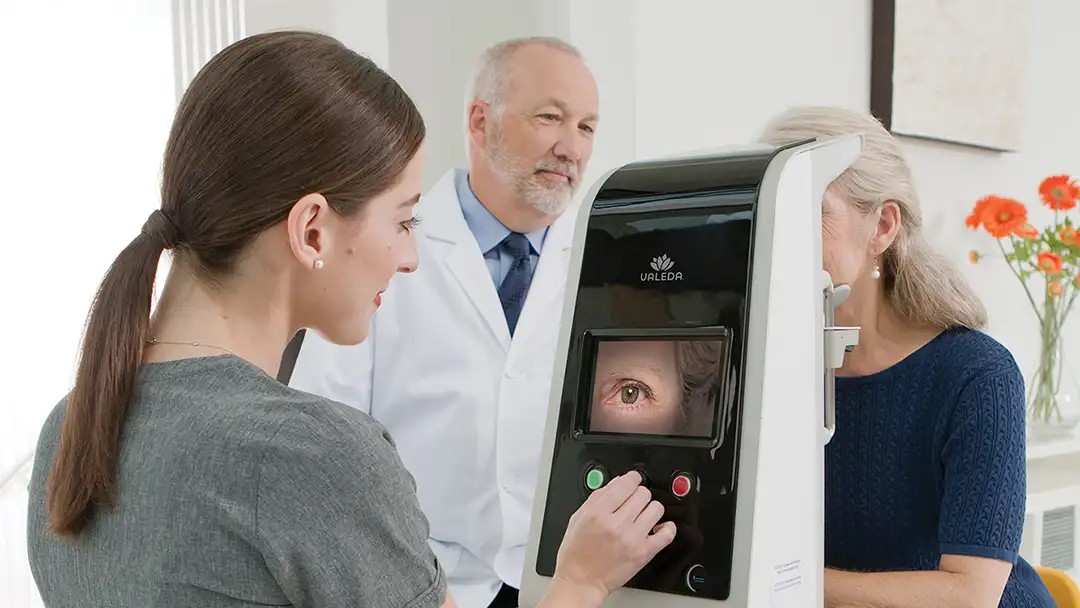
Many people see some floaters in their vision and wonder whether they should be concerned. Learn what floaters are, what causes them, and when an eye doctor should be consulted.
Clumps of Vitreous Jelly
Floaters are little black spots that you can see best against a brightly lit white background, or when looking at the sky on a sunny day. When you move your eyes, they also move, but there is a time lag: they seem to move shortly after your eyes move. The reason for this time lag is that they are usually caused by thickened clumps of vitreous jelly.
The vitreous jelly is the substance that occupies the center of the eye. When we are young, the vitreous is usually clear, but over time, some small clumps made of contracted collagen fibers form. They block light coming from the front of the eye and cast shadows on the retina, the light-sensing nerve tissue in the back of the eye. Since the vitreous is a thick jelly, it has inertia (resistance to change in motion), so that it moves slightly after any eye movements, causing the floater time lag.
Most Floaters are Normal
Most of the time, floaters are not concerning, especially if they are unchanging from day to day. They may occur in one or both eyes, and you can figure out which eye has them by covering one eye at a time and looking for them.
Video: Eye Floaters
When to Consult a Doctor
However, if they are new, become more numerous over time, have a reddish color to them, or are associated with flashing lights, then they may represent a serious problem that should prompt a call to your ophthalmologist.
Retinal Tears and Detachment
Retinal tears or detachments often cause flashing lights and new floaters. The flashing lights are usually seen in an arc at the edge of the visual field and are caused by the vitreous jelly pulling on the retina. If you have these symptoms, you should call your ophthalmologist right away.
A retinal detachment is painless if it occurs spontaneously, or may be associated with eye pain if caused by getting hit in the eye. As a retinal detachment progresses, it looks like a black curtain coming across your vision, usually over the course of hours or days. It usually starts at the edge of the visual field and moves toward the center.
Migraines
Some people have migraines that cause flashing lights in the center of the visual field followed within about 30 minutes by a severe headache on one side of the head. This is different from the retinal detachment symptoms.
Vitreous Bleeding
Sometimes bleeding into the vitreous can cause floaters, which may have a reddish appearance. This is most likely to occur in diabetics who have new, abnormal blood vessels growing on the surface of the retina and into the vitreous. These vessels can leak and bleed, sometimes filling the vitreous with blood or blood spots. If you have these symptoms, you should call your ophthalmologist right away.
Severe Inflammation
Severe inflammation in the eye can cause white blood cells to enter the vitreous, and this can look like floaters. These are more common in patients with autoimmune diseases like lupus or sarcoid.
Rare Diseases
Very rare disease-causing floaters can occur with ocular lymphoma, where cancerous white blood cells grow in the vitreous. Even rarer is retinoblastoma, a form of cancer seen in babies that can cause white vitreous floaters that make the pupil look white in photographs (normally it would look red).
Summary
In summary, eye floaters are caused by thickened clumps of vitreous jelly. Many people have vitreous floaters, which are usually not concerning if they are stable and not associated with any other symptoms. However, if they are new, increasing in number, or associated with flashing lights or eye pain, then call your ophthalmologist right away.
About BrightFocus Foundation
BrightFocus Foundation is a premier global nonprofit funder of research to defeat Alzheimer’s, macular degeneration, and glaucoma. Since its inception more than 50 years ago, BrightFocus and its flagship research programs—Alzheimer’s Disease Research, Macular Degeneration Research, and National Glaucoma Research—has awarded more than $300 million in research grants to scientists around the world, catalyzing thousands of scientific breakthroughs, life-enhancing treatments, and diagnostic tools. We also share the latest research findings, expert information, and resources to empower the millions impacted by these devastating diseases. Learn more at brightfocus.org.
Disclaimer: The information provided here is a public service of BrightFocus Foundation and is not intended to constitute medical advice. Please consult your physician for personalized medical, dietary, and/or exercise advice. Any medications or supplements should only be taken under medical supervision. BrightFocus Foundation does not endorse any medical products or therapies.
- Eye Health
- Eye Tests









